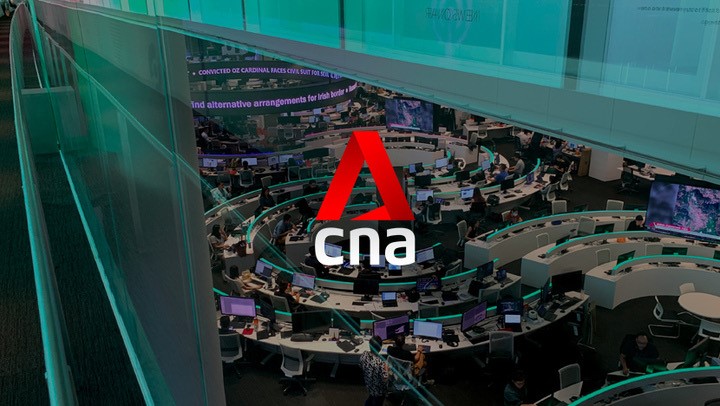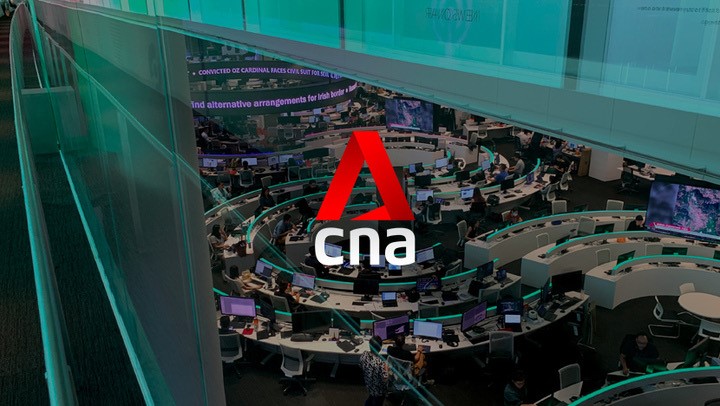It's one of the nation's most ambitious projects yet, aimed at securing its maritime future - with implications for jobs, trade and local businesses.
In the heart of port operator PSA’s newly expanded Pasir Panjang Terminal, the Republic’s long-term maritime ambitions are being put to the test.
A fleet of 30 driverless vehicles deployed to move cargo containers around the terminal are in the vanguard for the move to the Tuas mega port. Over 1,000 of these battery-powered four-wheelers will be developed for Singapore’s future port.

Towering above these vehicles is the world’s largest fleet of automated yard cranes - numbering nearly 200. At Tuas, that figure will rise to almost 1,000.
These are just two examples of the automation systems that PSA is looking at with Tuas in mind. And the lessons to be learned will be vital.
Mr Nelson Quek, PSA Singapore's head of Tuas planning, told Channel NewsAsia, on Looking Ahead. The two-part special (premiering Feb 7, 8pm) examines how Singapore’s mega infrastructure projects are positioning the nation for the future.
THE HIGH STAKES INVOLVED
The benefits of automation are tied to the very purpose of constructing the Tuas mega port: To keep Singapore as connected as ever to the world and to stay ahead of the game, at a time when countries in the region are investing heavily in their port capabilities.
The project is set to cost billions of dollars and span more than two decades. And the stakes are high - not least because the maritime sector contributes 7 per cent to the economy and over 170,000 jobs.

The maritime ecosystem here supports many home-grown companies, including small and medium enterprises, in areas from manufacturing to logistics to technology.
And with PSA giving up its city terminals by 2027 and the Pasir Panjang Terminal by 2040, when the Tuas mega port will be completed, the industry’s future will singularly lie in the new port.
For success to come, “the Tuas that we’ll operate must be different from the port that we run now”, said PSA International group chief executive officer Tan Chong Meng, who added: “Tuas, for us, is an opportunity to reset.”
THE QUEST TO BE BUSIER...
By year's end, PSA’s existing terminals will be able to collectively handle almost 50 million 20-foot Equivalent Units (TEUs) of cargo annually, a measurement based on the standard ship containers, which are either 20 or 40 feet long.
The Tuas mega port will eclipse this with a capacity of 65 million TEUs - almost double the 33.7 million TEUs that passed through Singapore last year.
By 2040, demand along the Straits of Malacca alone will be in excess of 100 million TEUs, according to Mr Tan.

“So it’s a question of our … scale and our market position – that we desire to maintain the strength of PSA within our neighbourhood,” he said.
TO BE FASTER...
Important as this role is, however, the trans-shipment business is also highly competitive, with rivals “from Busan (South Korea) all the way to Europe”, added Mr Tan.
That is why Singapore must earn its business “every day”, said Mr Nicolaj Noes, the Asia-Pacific head of operations for Maersk Line, the global leader in container shipping.
“It’s a little bit like when you decide where to fly to on holiday. Your first choice is … to fly directly,” Mr Noes said.
“(To) go through a trans-shipment hub like Singapore, there has to be a value proposition there … Singapore has to offer a more cost-efficient solution. It has to offer more flexibility; it has to offer wider choices.”
That is where automation will help.
Said Mr Quek: “With automation, the performance can be a lot more predictable and consistent. And that’s very important to customers ... (Shipping lines) also want speed and to turn around their vessels faster.”
He added that the Tuas mega port will have a “superior layout to enable a more efficient trans-shipment operation”, and along with that, faster service.
TO GO BIGGER
The new port, with 8.6km of wharves, must also cater for the trend of ever-larger container ships. Maersk’s Triple-E vessels, for example, are 400m long and among the world’s biggest ships.
“One vessel can carry about 111 million pairs of sneakers,” said Mr Noes. Seven vessels can carry enough sneakers for everyone in Europe to get a new pair. “That gives a good idea of the dimension of the vessels.”

The Danish company is working closely with PSA, and on that front, Mr Noes said: “There is the understanding (that) there has to be infrastructure that supports large vessels.”
HOW BUSINESSES CAN BENEFIT
Beyond striving to remain the world’s top maritime capital (a title it has earned for three consecutive years) and Asia’s best port (29 times and counting), Singapore can create more opportunities for local companies with the Tuas mega port.
Said Mr Tan: “Through innovation, we imagine a future that … would be able to support both Tuas as a port and the Tuas hinterland, so that future manufacturers and commercial, industrial and logistical players will all benefit from the future possibilities.”
That includes start-ups like visual effects firm SideFX Studios, one of the two top finishers at the recent Smart Port Challenge organised by the Maritime and Port Authority (MPA). The firm has harnessed virtual reality to train crane operators and engineers.
SideFX co-founder Ng Teow Koon said: “This is where we’re coming in with the traditional players (in the Tuas area), to build up this space with all these exciting technologies and make use of it to bring it to the next-generation port.”
Software provider Glee Trees, the other top finisher last year, is working to streamline cargo and shipping processes with its artificial intelligence platform Gleematic.
Digitalisation is already opening up growth areas in Singapore’s logistics sector, which employed over 230,000 people in 2015. It has been ranked by the World Bank as Asia’s top logistics hub for a decade now.
Infrastructural investments like the Tuas mega port will further “translate into new capabilities, new opportunities for companies to get in on the game and grow Singapore together”, agreed Supply Chain and Logistics Academy CEO Ian Dyason.
PSA’s Mr Quek thinks that early engagement with stakeholders such as the community, the industry and relevant agencies – in addition to the takeaways from the technology trials – will indeed be “critical to the success of the project”.
Careful planning is also needed, said Finance Minister Heng Swee Keat, who cited the Jurong Industrial Estate as an example of the efforts required for such projects to succeed.
“But the very fact that we’ve stayed so competitive as an economy owes a great deal to our connectivity,” he added as he highlighted the port’s role in the import and export of raw materials and cargo “at very competitive rates” for businesses.
THE FOUNDATION STONES
As Singapore now looks ahead to the mega port at the western end of the island, the work there goes on round the clock.
By 2020, the first of the project’s four phases will be completed. The land reclamation for all the future terminals, which has just crossed the 40 per cent mark, will also finish at the same time.
Over in the Pasir Panjang Terminal, container equipment specialist Alan Lee is one of the few who has already had a glimpse of what the future port will be like.
A 23-year veteran, Mr Lee had to move up and down the yard cranes previously. Now that the cranes are fully automated and no longer require an operator each, 18 to 25 workers in the control centre handle 186 cranes at a time.
“It has been very good for me – improving myself, enhancing my skills,” he said. “For future ports like Tuas and also the world that’s advancing, it’s relevant for me to upgrade … so that I can keep up the good work.”
Thus the foundations for the Tuas mega port are being laid, not only with concrete on reclaimed land - but also with skills, technology and automation.
Source : Channel NewsAsia



















